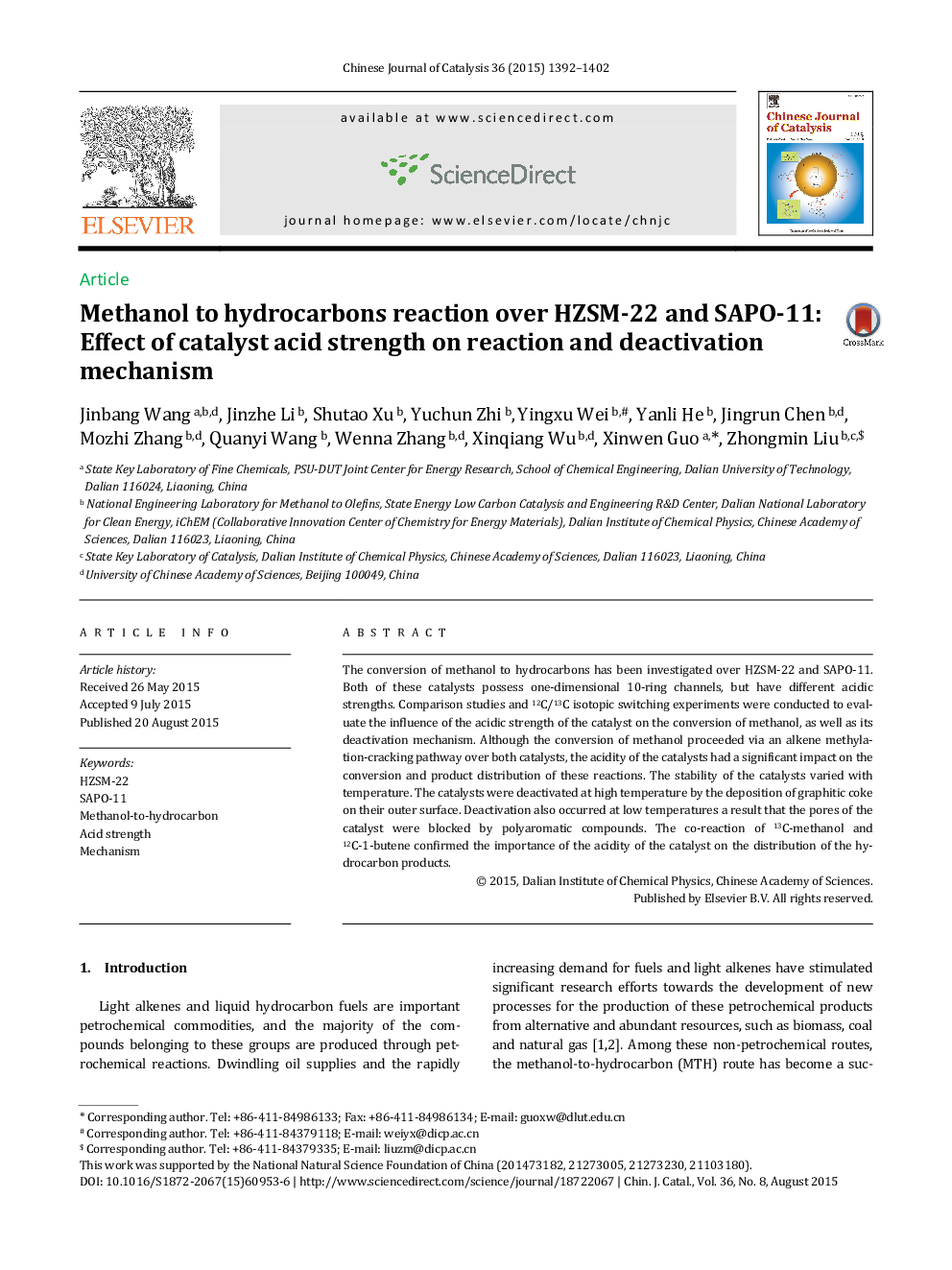| Article ID | Journal | Published Year | Pages | File Type |
|---|---|---|---|---|
| 59501 | Chinese Journal of Catalysis | 2015 | 11 Pages |
The conversion of methanol to hydrocarbons has been investigated over HZSM-22 and SAPO-11. Both of these catalysts possess one-dimensional 10-ring channels, but have different acidic strengths. Comparison studies and 12C/13C isotopic switching experiments were conducted to evaluate the influence of the acidic strength of the catalyst on the conversion of methanol, as well as its deactivation mechanism. Although the conversion of methanol proceeded via an alkene methylation-cracking pathway over both catalysts, the acidity of the catalysts had a significant impact on the conversion and product distribution of these reactions. The stability of the catalysts varied with temperature. The catalysts were deactivated at high temperature by the deposition of graphitic coke on their outer surface. Deactivation also occurred at low temperatures a result that the pores of the catalyst were blocked by polyaromatic compounds. The co-reaction of 13C-methanol and 12C-1-butene confirmed the importance of the acidity of the catalyst on the distribution of the hydrocarbon products.
Graphical AbstractComparative studies over HZSM-22 and SAPO-11 have demonstrated the importance of the acidity of a catalyst on its activity and stability, as well as its product distribution and deactivation patterns for the conversion of methanol following the alkene methylation and cracking route.Figure optionsDownload full-size imageDownload as PowerPoint slide
